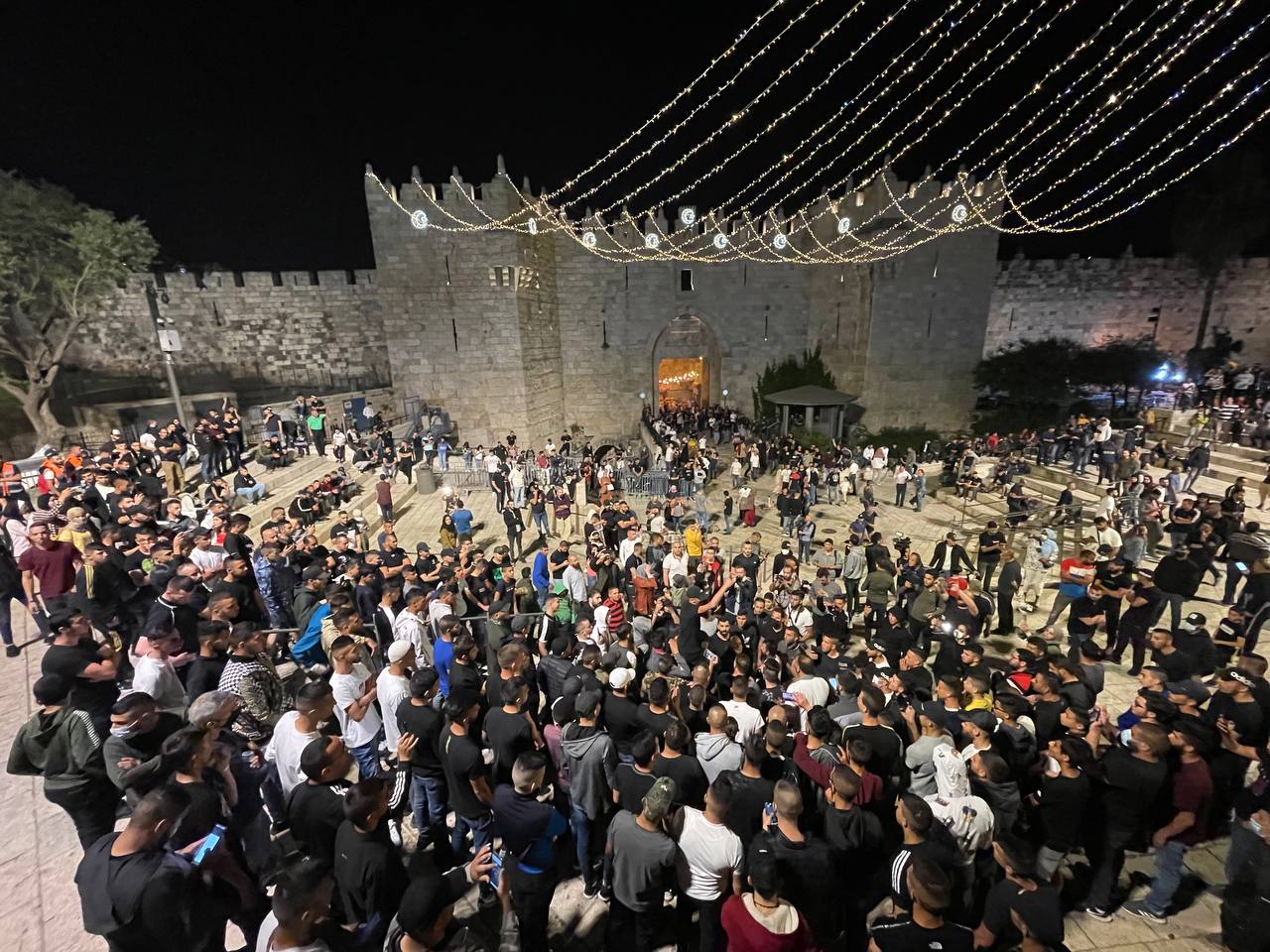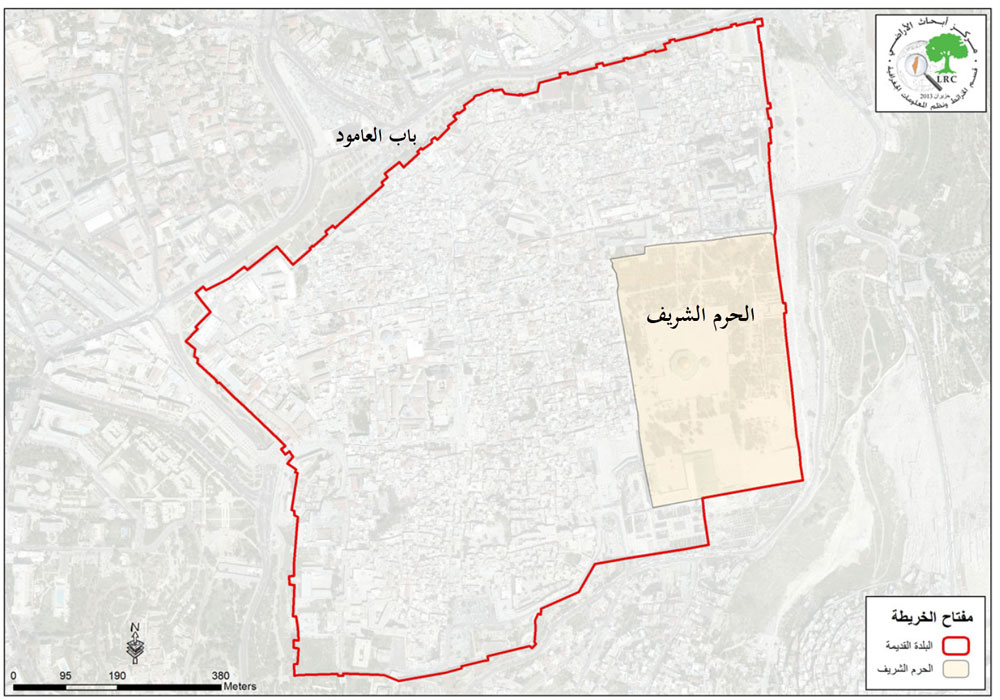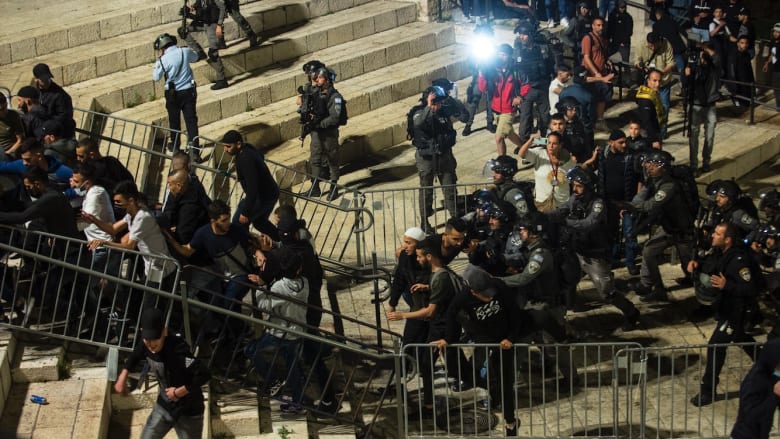Related
Iron barriers removed from the stairs of Bab al-Amud, Jerusalem after fierce and long clashes between Palestinians and the occupation forces

On Sunday, April 25, 2021, the Palestinian Jerusalemite youth managed, after more than ten days, to force the occupation authorities to remove the iron barriers that they had erected on the stairs of Bab al-Amud ( Damascus gate) preventing them from sitting at them or being in the place. This happened after fierce clashes between the Palestinian protesters and the occupation army around the place. These clashes, later on, spread to other neighborhoods in the city and, even, to other cities in the West Bank and inside Israeli proper. Throughout these clashes the Palestinians faced big numbers of the occupation forces, who suppressed them with various barbaric means such as beating, them, spraying waste water, throwing tear gas and sound bombs and firing rubber bullets, which caused large numbers of injuries and arrests.
The occupation police also attacked worshipers at the gates of Al-Aqsa Mosque, especially at Bab Hutta, after they had intensified their repressive measures against worshipers and visitors to Al-Aqsa Mosque, by beating, arresting and transferring a large number of them to detention centers.
All of these repressive measures came in light of the ongoing attack on the part of the occupying power against the Palestinian presence in the city, particularly during the fasting month of Ramadan as thousands of Palestinians flock to the old city from different parts of the occupied territories to pray in its mosques, which revives the commercial standstill in the Old City.
.
A glimpse on Bab al-Amud:
Bab al-Amoud is one of 13 gates around the old city of which 8 are open and 5 are closed. It is considered one of the most important and most beautiful gates of the old city. It is the main entrance to the Al-Aqsa Mosque and the Church of the Holy Sepulcher. It is located on the northern side of the wall surrounding the Old City at the beginning of the valley that cuts the Old City from the north to the south, known as the "Al-Wad" road.
The construction of Bab al-Amud dates back to the Ottoman period between 1537 and 1539. The door is surmounted by a small guard hole and a crown that was destroyed in an earthquake that struck Jerusalem in 1927 AD, and later on, restored by the occupation authorities.
Bab al-Amoud was called by this name due to the presence of a 14-meter-high black marble column, which was placed in the inner courtyard of the gate during the Roman period more than two thousands years ago. Through this column, the distances from Jerusalem were measured by means of “Milliaris” stones, and it is believed that this term is the origin of the unit of measurement "the mile" which is used today to measure distances. Bab al-Amud has other names such as Damascus gate and Nablus gate as it faces the two cities to the north and the ancient trade caravans originated to the two cities from Damascus gate. The total area of its courtyard, terraces, and Mamluk shops at its entrance is about eight and a half dunums.


Protecting marginalized communities in Jerusalem through legal support and advocacy
This report was prepared with EU funding, the contents of this document do not reflect positions of the European Union





